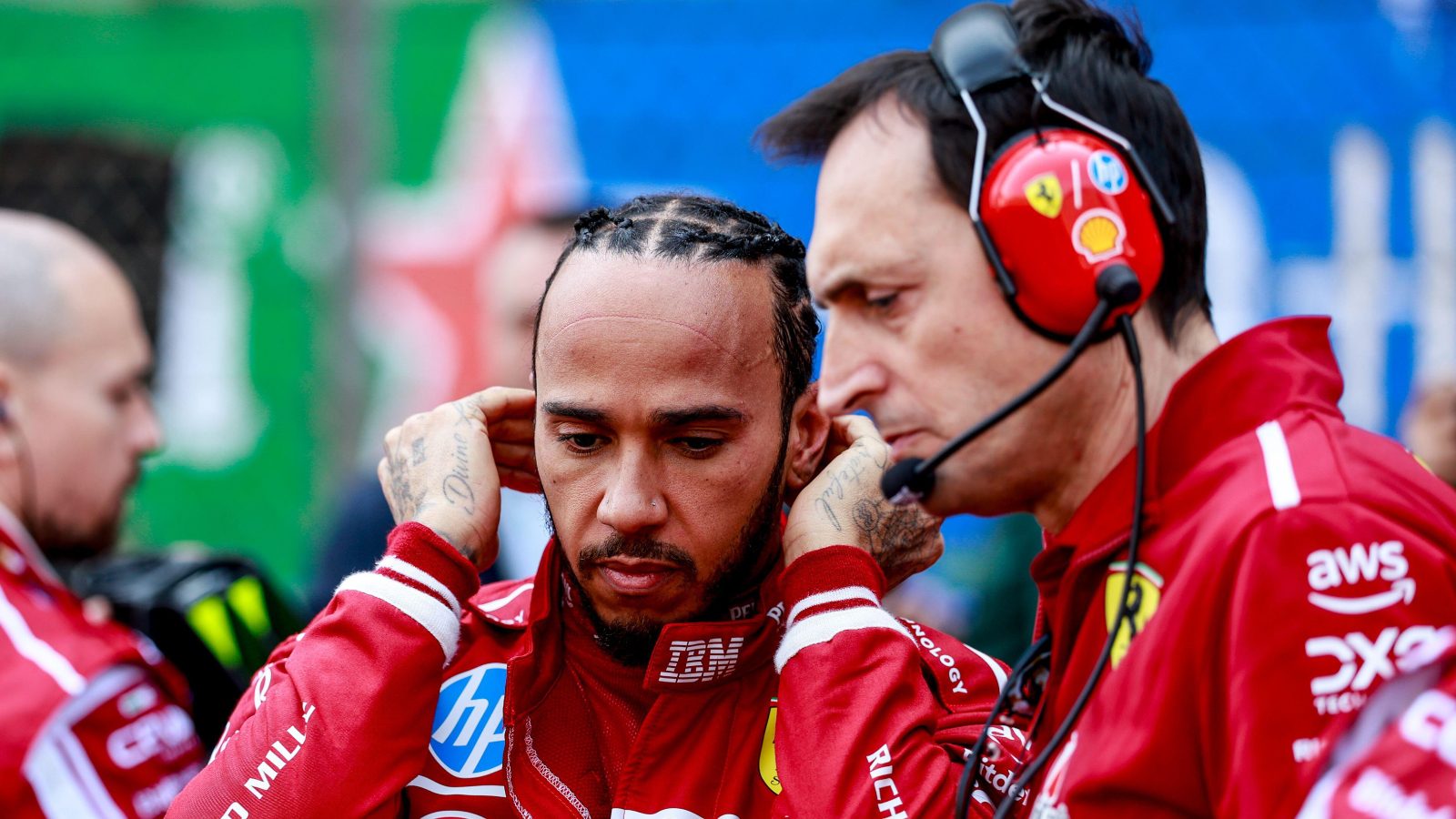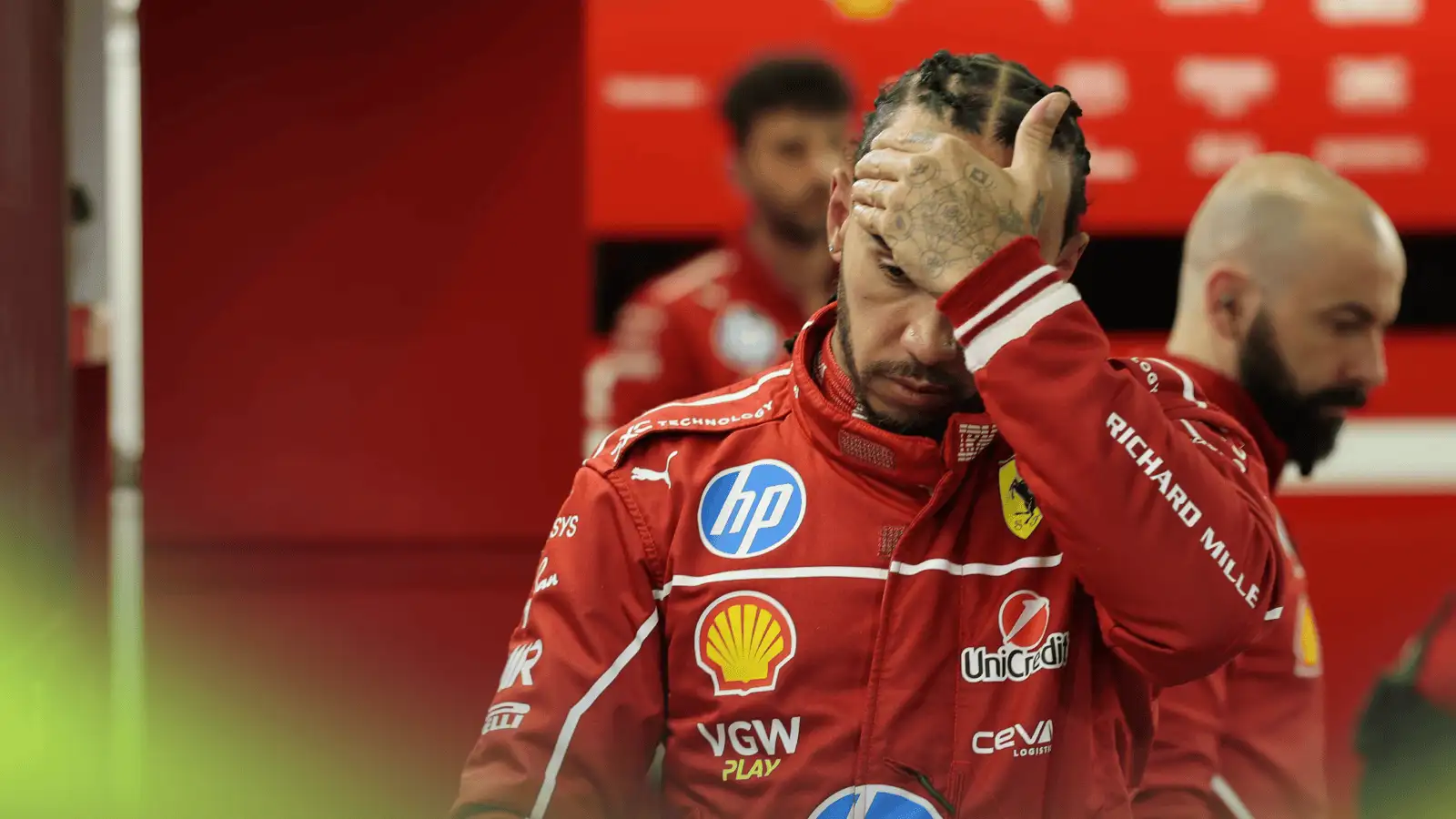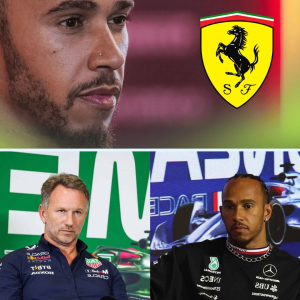When Lewis Hamilton crossed the line at the Belgian Grand Prix and calmly said, “I gave it everything,” it might have sounded like just another standard race debrief. Seventh place after starting from the pit lane seemed like a decent recovery.
But for those listening closely, it wasn’t about the position—it was about the tone. The message. The weight behind the words.
Moments later, he added: “Sorry about this weekend, guys. Lost you some points.” It was soft-spoken, almost monotone. There was no outburst, no drama. And that’s precisely why it hit so hard.
Hamilton has had tough races before—bad luck, poor strategy, underperforming machinery. But this one felt different. This was more than a bad day at the office. This was a subtle but unmistakable signal.

A Weekend of Hollow Progress
Ferrari had arrived at Spa with optimism. New upgrades were fitted—an improved floor, enhanced aerodynamics, and promises of better rear-end grip. The team talked up a “step forward.” But from Friday’s first session, it was clear to Hamilton: something wasn’t right.
The car felt unpredictable. Snap oversteer. Inconsistent balance. A setup that never truly settled into a sweet spot. And unlike in past weekends where problems led to productive discussions, this time there was a void. A lack of explanation. No clarity. No confident direction. Just a vague sense that the team themselves didn’t fully understand what had gone wrong.
Hamilton wasn’t angry—he was distant. That’s what made it so striking.
The Importance of Trust
For a driver like Hamilton, trust isn’t optional—it’s foundational. He’s spent much of his career driving through adversity, but always with the knowledge that his team was in it with him, fully and transparently. At Spa, that foundation looked shaky.
While Charles Leclerc seemed at ease in the sister Ferrari—receiving constant feedback, timely strategy calls, and encouragement from his race engineer—Hamilton’s side of the garage felt muted. His engineer, Riccardo Adami, sounded flat and impersonal. There was no urgency. No chemistry. Just cold data being relayed over the airwaves. It didn’t sound like teamwork. It sounded like obligation.
Contrast that with Leclerc, whose communication was clear, structured, and energized. It reflected a level of familiarity and mutual trust built over years. Hamilton, a newcomer in red, is still trying to find that wavelength—and increasingly, it seems like no one’s tuning in.

More Than Just Car Setup
To the outside world, equal equipment implies equal opportunity. But in Formula 1, it’s never quite that simple. Yes, both drivers got the same upgrades. But the way a car is developed, designed, and set up over months of iteration can unintentionally favor one driving style over another.
Leclerc looked confident at Spa. His car responded well. He extracted performance. Hamilton, meanwhile, looked like he was fighting the machine more than racing his rivals. That kind of misalignment doesn’t just impact lap time—it chips away at a driver’s belief.
Strategy Paralysis
Perhaps the most glaring issue, though, came not from the chassis but from the pit wall. Hamilton’s strategy was hesitant. His tire change came too late. He got caught in traffic, lost valuable seconds in dirty air, and couldn’t mount a meaningful recovery. Once again, Ferrari seemed reactive rather than proactive. They didn’t roll the dice. They didn’t protect his position. They watched opportunities pass.
This isn’t new. Ferrari has been criticized all season for conservative strategy. For a team that once prided itself on boldness and innovation, they now look risk-averse—especially when it matters most.
And in a team where Hamilton’s still earning internal equity, every missed opportunity carries extra weight. He pushed the car, made overtakes, took risks. But the pit wall didn’t meet him halfway.
The Sound of Silence
Post-race, Hamilton’s silence spoke volumes. He didn’t linger in the media pen. Didn’t go out of his way to debrief with the crew. No long hugs. No motivational words. Just a quiet retreat. This wasn’t sulking. This was strategic silence—the kind that lets everyone around you feel the discomfort of missed potential.
And it wasn’t just the fans who noticed. The paddock picked up on the mood. Journalists called it “uncharacteristic.” Engineers called it “unsettling.” Even some team insiders admitted it felt like a shift.

A Divided Garage?
This isn’t about favoritism. No one’s saying Leclerc is deliberately prioritized. But systems evolve around people. Leclerc is Ferrari’s known quantity, the man they’ve built with. Hamilton is still being integrated. And integration takes time—especially when results aren’t just elusive, but inexplicable.
Hamilton doesn’t need to be number one. But he needs to feel heard. Supported. Aligned. Right now, it looks like none of those boxes are being ticked.
Looking Forward—or Nowhere?
This race wasn’t about seventh place. It was about momentum. About belief. And Hamilton’s message wasn’t just to his engineers. It was to Ferrari’s leadership. He’s not pointing fingers, but he is pointing out cracks.
Ferrari’s challenge now isn’t just to find pace. It’s to rebuild cohesion. Because when Hamilton said, “That’s all we had,” it wasn’t a statement of resignation. It was a warning: we are stuck.
And if Ferrari can’t get unstuck soon—if they keep relying on hope over answers, on tradition over progress—they won’t just lose ground in the constructors’ championship. They could lose the belief of a seven-time world champion.
And Lewis Hamilton won’t wait forever.
What’s Next?
The pressure is now squarely on Ferrari—not just to improve the car, but to re-earn their driver’s confidence. Spa showed that technical upgrades are meaningless without strategic execution and emotional alignment.
Hamilton’s patience is finite. His legacy is secure. He didn’t come to Ferrari to fight for seventh place. He came to make history. And if the system around him doesn’t rise to that level, he’ll quietly—but firmly—find his way out.
Do you think Ferrari is giving Hamilton what he needs to win? Let us know in the comments. And if this tension keeps building, buckle up—because this story is far from over.
Full Video:





